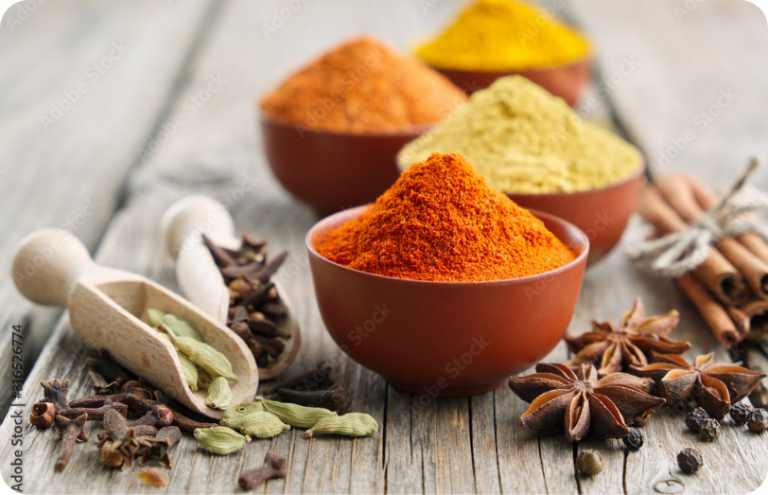Healing Through Taste, Energy, and Ayurvedic Nutrition
What I learned in culinary school
As a classically trained chef turned Ayurvedic culinary health coach and digestive specialist I’ve spent years marrying bold, unexpected flavors—pairing sour with spice, sweet with smoke, and bitter with brightness. In culinary school, we’re taught the art of balance: flavor profiles, plating techniques, and how to coax the best out of an ingredient. But here’s the truth—nowhere in that fast-paced kitchen world was I ever taught what Ayurveda revealed to me: that every taste has an action in the body. That flavor is not just flavor. It’s information. It’s medicine.
In this blog, I’ll show you how these ancient principles transformed the way I see food. Perhaps my insight will spark inspiration or connect some dots about how you view food—and more importantly, how you relate to it. My hope is that it opens a door to seeing your meals not just as nourishment, but as a powerful pathway to clarity, vitality, and balance. Of course, this doesn’t mean you have to change everything you eat forever—it’s simply an invitation to build awareness and explore what’s possible. A shift in perspective can be just as nourishing as the food itself.
Taste Is More Than Flavor
In the West, taste is something we chase—pleasure on the palate, a pop of seasoning, a sugary reward or spice beyond the tolerable. But in Ayurveda, taste (or rasa) is deeply intelligent. Each taste carries not just a sensation, but a quality, a post-digestive effect, and an energetic action on the body and mind.
In other words, taste is a messenger.
When I began to study Ayurvedic nutrition, I realized that my favorite ingredients weren’t just comforting or flavorful—they were actively influencing my energy, mood, digestion, and even sleep. The sweet taste was grounding my nervous system. The bitter greens I used to balance a dish? They were also clearing heat and detoxifying my liver. This was a revelation.
The Three Qualities (Gunas) Made Simple
Before we dive into the six Ayurvedic tastes, it helps to understand the three gunas—fundamental qualities that exist in all things, including food.
- Sattva – the quality of clarity, harmony, and balance. Think: fresh fruit, ghee, cooked grains.
- Rajas – the quality of movement, stimulation, intensity. Think: caffeine, chili, sour pickles.
- Tamas – the quality of heaviness, inertia, dullness. Think: processed food, leftovers, fast food.
Each taste affects the gunas—and your mental and emotional state. When we overdo pungent and sour foods, for example, we can tip into rajasic energy—agitated, impatient, overheated. When we lean too hard into sweet or heavy foods, we may slip into tamas—sluggish, foggy, lethargic. A sattvic plate brings us back into balance: light but satisfying, energizing yet calming.
The 6 Tastes in Ayurveda—and How They Impact Digestion and Health
In Ayurvedic nutrition, each of the six tastes influences digestion, energy, and emotional balance in specific ways. Here’s how they work in the body: I am going to break them into two parts. Building and Reducing.
The first three tastes are Building. They build tissues, ground and nourish.
- Sweet – The sweets taste can be found in rice, dairy, dates, root veggies and animal meats. Sweet taste pacifies Vata and Pitta but can aggravate Kapha.
- Sour – Stimulating, hydrating, digestive. Sour taste is found is foods like lemon, yogurt, fermented foods. Sour taste increases salivation and appetite. Too much can provoke Pitta.
- Salty – Moistening, softening, balancing. Salty taste is in sea salt, miso, seaweed. Enhances flavor and helps retain hydration. In excess, it can aggravate Pitta.
The next three tastes are Reducing. They stimulate, cleanse and detoxify.
- Pungent – Heating, clarifying, stimulating. Think ginger, garlic, chili, mustard and most dried spices. It boosts metabolism and clears stagnation but can aggravate both Vata and Pitta in excess.
- Bitter – Cooling, detoxifying, drying. You’ll find the bitter taste in kale, turmeric, dandelion. Bitter taste supports liver function, reduces heat, and promotes cleansing—but too much can deplete energy.
- Astringent – Absorbent, toning, drying. Some astringent foods are lentils, cranberries, pomegranates, green tea. It aids tissue repair and pacifies Pitta and Kapha but can be too drying for Vata.
In the modern Western diet, the bitter taste is the most underrepresented—and the most needed. While Ayurveda teaches that bitter is essential for cleansing and cooling the body, it’s often overlooked because it’s not associated with pleasure or comfort the way sweet and salty foods are. Instead, we’ve developed a heavy dependence on processed, hyper-palatable foods that are overwhelmingly tamasic and overly sweet, dulling our digestion, our taste buds, clarity, and vitality.
It’s no wonder then that chronic illness continues to rise. According to the CDC’s most recent statistics: [1][2][3]
- Over 41.9% of American adults are obese.
- 1 in 3 adults has cardiovascular disease.
- More than 11% of the population has diabetes—and many more are undiagnosed.
These are not just numbers—they’re signals. And Ayurveda helps us read them differently: not just as medical conditions, but as imbalances rooted in how we eat, live, and ignore the full spectrum of holistic wellness.
How to Tell What Taste You Might Be Missing
Ayurveda teaches us that cravings are often signs that something deeper is at play. Curious what your body might be asking for? Here’s a quick check-in to help you listen:
- Feeling sluggish or foggy? You may be leaning too heavily on sweet and heavy tastes. Try incorporating more pungent or sour tastes to stimulate energy and wake up digestion.
- Feeling overstimulated or irritable? Too much pungent or sour in your meals may be overstimulating your system. Bring in more sweet, bitter, or astringent tastes to soothe and stabilize.
- Craving sweets after meals? This may be your body’s way of telling you that one of the other five tastes is missing from your day. When all six tastes are represented throughout your meals, your body—and mind—feel more satisfied and balanced.
Use these cues to help recalibrate. Your taste buds are wise—they’re speaking. Ayurveda just gives us the vocabulary to understand them.
Personalized Nutrition & Your Ayurvedic Body Type
In Ayurveda, one size never fits all—especially when it comes to food. Just as each taste carries a unique action, each body type, or dosha, responds to taste in its own way. This is the heart of personalized nutrition in Ayurvedic practice.
There are three primary doshas, or biological energies, each made up of two elements:
- Vata (Air + Ether): Light, dry, cold, and mobile. Benefits from grounding, warming, and hydrating foods—especially sweet, sour, and salty tastes.
- Pitta (Fire + Water): Hot, sharp, oily, and intense. Needs cooling, soothing, and stabilizing foods—favoring sweet, bitter, and astringent tastes.
- Kapha (Earth + Water): Heavy, slow, cool, and moist. Needs light, stimulating, and drying foods—best supported by pungent, bitter, and astringent tastes.
Each of us has a unique constitution, and we often gravitate toward certain tastes out of habit or craving. But those tendencies might not always serve our balance. A fiery Pitta might crave spicy food—but too much pungency can lead to burnout, acid reflux, or irritability.
A dry, airy Vata might skip salty or sour foods, when those are precisely what help keep them grounded and nourished.
Take Kapha, for example. Because Kapha is heavy, cool, and stable by nature, it often gravitates toward comfort foods and sweet, salty flavors like: creamy pasta, baked goods, or rich stews. But these same tastes can deepen Kapha’s imbalance, leading to weight gain, sluggish digestion, or congestion. What Kapha truly needs is lightness and stimulation: the sharp kick of ginger, the cleansing bitterness of dandelion greens, the drying pull of astringent lentils.
Learning to recognize these patterns is empowering—it’s not about restriction, but redirection.
What Culinary School Didn’t Teach Me
This is where Ayurveda cracked the code for me. As chefs, we’re trained to layer flavor for balance—but we’re not taught to understand the physiological actions that these tastes initiate.
We balance a creamy coconut curry with a squeeze of lime and a sprinkle of chili—yes, to excite the tongue. But what we’re also doing (though we may not realize it) is:
- Pacifying Vata with the sweetness of coconut
- Waking up digestion with the sour lime
- Kindling agni (digestive fire) with the heat of chili
When I began to cook with this awareness, everything shifted. Meals became more intentional. Clients noticed they felt lighter, calmer, more energized; not because of calories, but because of qualities.
Self Study: Your Ayurvedic Inner Taste Test- Try this at home!
Next time you sit down to a meal, do a quick inner taste test. Are all six Ayurvedic tastes present? How do they make you feel—not just in your mouth, but in your belly, your thoughts, your energy?
This is how we begin to reclaim food as medicine. This is how we honor the wisdom of our body, and the brilliance of Ayurveda, one bite at a time.
And ofcourse, wellness isn’t just about food, taste, or even cooking—it’s about building sustainable habits that align with your unique lifestyle. It’s about finding rhythm in your day, in your digestion, in how you nourish yourself on and off the plate.
This is exactly what I explore in depth inside my 12-month Ayurvedic coaching program, Club BodyScape. We don’t just learn how to cook—we learn how to nourish, to realign, and to create new patterns and lasting habits that support lasting health and align with our lifestyle.
If this resonates with you or sparks your curiosity, I invite you to learn more. Registration for Club BodyScape opens in September, and I’d love to have you join me. DM or message me if you’d like more information or take a look for yourself here:
Don’t know what your body type is? Visit my website: www.dhandelione.com and take my dosha quiz to find out.
References:
- Centers for Disease Control and Prevention. “Adult Obesity Facts.” https://www.cdc.gov/obesity/data/adult.html
- Centers for Disease Control and Prevention. “Heart Disease Facts.” https://www.cdc.gov/heart-disease/facts.htm
Centers for Disease Control and Prevention. “National Diabetes Statistics Report.” https://www.cdc.gov/diabetes/data/statistics-report/index.html

 0 likes
0 likes 0 comments
0 comments
